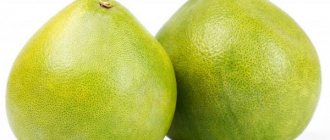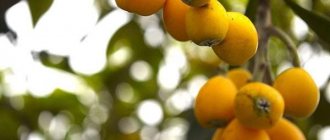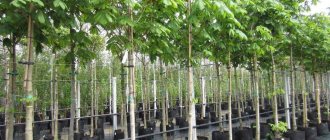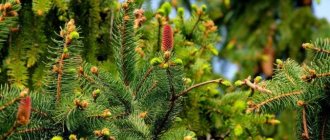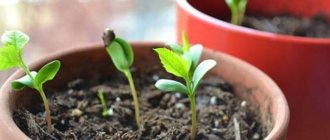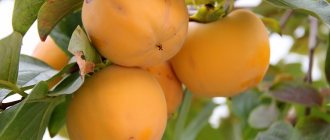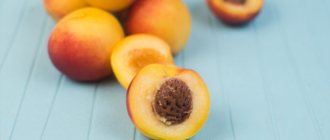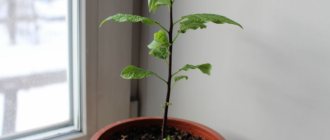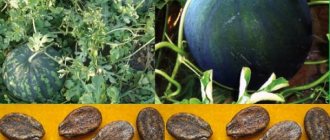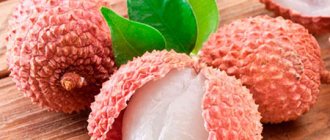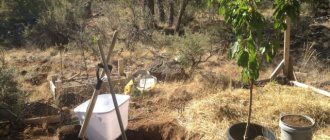Miniature orange trees have appeared for sale in flower shops. Covered with round orange balls of fruit and bright, glossy foliage, they attract the eyes of buyers. For a resident of the middle zone, an orange tree is a “piece” of summer vacation. Among flower growers there are those who want to grow subtropical exotics on their own. How to plant an orange so that you can enjoy the beautiful plant for many years?
How to grow an orange at home from a seed
This growing option is quite accessible to lovers of indoor floriculture. The exotic plant sprouts, grows and bears fruit beautifully in city apartments. The Merheulsky variety is often hidden under the domestic orange tree. It is compact, grows up to a meter and produces about 40 fruits. There are several varieties of indoor orange, among which are in demand:
- Gamlin: grows up to 1.5 m and bears juicy fruits in late autumn;
- Pavlovsk orange is a low-growing variety: the tree grows up to 1 m; with good fruiting, the oranges ripen for a long time;
- Washington Navel grows up to 2 m in height and bears large fruits.
All you have to do is throw an orange seed into the ground and wait for the result. The orange will grow, as it is one of the most unpretentious representatives of the Citrus family. To figure out how to grow an orange into a full-fledged tree, you need to know some of the nuances associated with planting and care.
An unusual orange tree in a pot will bring the smell of summer and citrus aroma into the room, subject to:
- landing rules;
- growth conditions;
- crown registration rules.
A homemade orange tree is no different from its “brothers” purchased at flower centers. It forms a dense crown of gray twigs. In the eighth year of life, tender white flowers appear, and the room is filled with a subtle citrus aroma. Then orange spherical fruits appear.
Pests
Citrus bug: an insect covered with thread-like processes on a 5 mm body. It settles on the underside of foliage and leaves a powdery coating.
Methods of control are treatment with a solution of laundry soap and then with an insecticide.
Scale insect: covers the leaves with brownish spots. The insect's body is covered with a shell that is impenetrable to poison.
Therefore, the pest is cleaned from the leaves with a cotton swab dipped in alcohol or soap solution.
For prevention, the crown is treated with an insecticide after removing insects.
Aphids: their appearance is signaled by a sticky coating on the leaves. Methods of fighting aphids are similar to fighting scale insects.
Red citrus mite: This pest is very difficult to spot because it is very small. It settles on the entire surface and draws juices out of it.
The plant begins to lag behind in growth, the leaves and fruits become deformed. To prevent mite infection, oranges are sprayed with a two percent oil emulsion.
Growing an orange tree
To grow an orange from a seed, it is important to obtain a fresh seed from the domestic orange variety of interest. Old, bruised, hard-crusted seeds will not produce the expected results in the form of a beautiful home-grown orange tree. But the citrus exotic is still far away: the orange seed should be prepared, planted, germinated and the best conditions for growth created.
Preparing seeds for planting
The preparatory stage is important, since a well-treated seed is guaranteed to sprout. The seeds are prepared for planting as follows:
- Select seeds that are weighty, large, regularly shaped and without damage.
- Remove from the pulp and clean by placing under running water.
- Leave the bones in soft water for a day
It is not necessary to add fertilizers or growth stimulants to the water to germinate a citrus crop. It is enough to soften the upper, densest shell. Orange seeds have good germination without additional manipulation.
Soil preparation and planting
Each orange seed is placed in a separate glass. Planted 1-3 copies guarantee the germination of a homemade orange tree. Use soil created for citrus fruits or mix turf soil, peat and sand (2:1:1). A simpler composition is also suitable: peat and turf soil (1:1).
The planting steps are as follows:
- We use a pot (any small container), making holes first and pouring a drainage layer on the bottom. Stagnant water is harmful to the fragile roots of a young tree.
- Pour in soil and compact lightly.
- We make a hole in the ground at a depth of 1-2 cm and place an orange seed.
- Cover with soil, water and place in a warm, shaded place to germinate.
- We create a moist greenhouse effect by covering the pot with film or the cut-off top of a plastic bottle.
- The first orange sprout appears a month later. When seedlings germinate, the container is moved closer to the rays of the sun.
To grow indoor oranges, the seeds are thrown into the ground in the spring. In this case, there is no need for additional lighting, and the seedling grows strong, receiving the required amount of light and heat.
Transplanting an orange at home
As soon as the small orange tree has 2 true leaves, it is time to replant it. A container with a diameter of 8 to 10 cm and the composition of the soil mixture is suitable: garden soil, sand, peat, humus (2:1:1:1). The time to change “place of residence” is spring.
Optimal conditions for orange growth at home
A resident of the subtropics, the orange loves space, light and moist air, but is painful in drafts. A home tree requires conditions as close as possible to its native places. Knowing the characteristics of the sunny fruit, this is quite possible.
Lighting
At home, the orange tree prefers a southeast location. It loves light, but burns occur under direct rays of the sun, so it is advisable to slightly shade the orange leaves. An abundance of light is important, otherwise growing a strong home tree from a seed with bright green foliage and orange fruits is quite problematic. In winter, the plant needs lighting.
Temperature and humidity
Orange requires +21-+25°C to grow. At higher rates, the orange tree grows quickly, but loses its ability to bear fruit. Lower values lead to inhibition of growth and development. Winter temperatures decrease and are maintained at +10-+15°C.
High humidity is the key to successful growth of your pet citrus fruit. If the humidity level drops below 40%, the seed orange tree will shed its leaves. This problem usually occurs in winter, when the air is dry due to heating devices.
Artificial moisturizing in any available way will help, as well as periodic spraying 2-3 times a week or daily. A tray with pebbles filled with water is placed under a homemade orange tree. So the humidity around the citrus will be much higher.
Watering
Moist soil in a potted orange tree grown from seed is the key to successful growing. There is a danger of the earth clod drying out or moisture stagnating in it. 1-2 abundant waterings of the tree per week are enough for the exotic citrus to feel comfortable. The earth is irrigated with warm water when the top soil layer becomes covered with a dry crust. In winter, the growth of a domestic tree slows down and watering is reduced.
Don't forget about drainage holes and a layer of expanded clay or pebbles at the bottom. Stagnation of liquid is dangerous for the roots of the orange tree.
Feeding
Household orange exotics require periodic feeding from the first days of spring to mid-autumn. They are applied with complex fertilizer for citrus trees with a 2-week break. A self-prepared nutritional composition includes: 15 g of potassium salt, 25 g of phosphorus and 20 g of nitrogen fertilizer, diluted in 10 liters of water.
It is recommended to foliar fertilize oranges 2-3 times a year with ready-made formulations.
If the orange tree does not respond well to fertilizing, then water the soil for a long time and switch to foliar feeding along the leaves. Then you should try a citrus fertilizer from another manufacturer.
Flowering and fruiting
An orange from a seed bears fruit from the age of 8 years. A grafted houseplant begins to bear fruit earlier - 3-4 years. It begins to bloom in the spring. The orange tree flower has a pleasant, rich aroma. A flowering tree looks decorative. The ripening period of orange “balls” lasts 7-9 months. It’s surprising how much exotic citrus grows at home. Its lifespan is close to 50-70 years.
In order for an orange from a seed at home to enter the fruiting phase earlier, wintering conditions are created for it at +2-+5C, reducing watering and depriving it of fertilizing for 3 months. When the temperature rises to +15-+18C, the home orange tree begins to form buds, bloom and form ovaries.
How to plant outdoors
This is only possible provided that in winter the temperature does not drop below 12-15 degrees. If you live in a climate zone with a harsher climate, then you can only grow it in a greenhouse.
For planting, an elevated area is selected, on which trees are located in a checkerboard pattern. Planting is done in the spring, in well-cut and abundantly fertilized soil. For nutritional value, the soil is enriched with organic fertilizers.
When planting, the root collar is slightly buried so that when watering it is at ground level. The earth is lightly crushed, watered and mulched. Watering until complete rooting is carried out once a week, moistening the soil abundantly.
Care consists of watering and mandatory loosening. Mineral fertilizing is carried out twice during the growing season. On hot, sunny days, the plant needs to be shaded. To avoid burning the leaves.
In addition to watering and loosening, you need to regularly spray with fungicides and insecticides. This is necessary because it is easier to protect an orange tree from diseases and pests than to cure it later.
Grafting an orange from a seed
An orange tree grown from a seed does not always retain varietal characteristics, and the fruiting period is significantly delayed; the fruits sometimes grow small and have a bitter taste. The wildflower is visible at a young age: green thorns are noticeable on the trunk.
To grow a full-fledged homemade citrus with tasty fruits, a grafting procedure is carried out:
- the classic version, when a varietal cutting from an adult, fruit-bearing plant is grafted onto a seedling;
- budding by grafting a varietal citrus bud onto the trunk of an orange from a seed.
The grafting method helps:
- form a strong plant;
- speed up the fruiting period;
- strengthen the root system;
- breed capricious variegated varieties.
The seed tree is used as a rootstock at the age of 1-3 years with a trunk diameter of up to 6 mm. Any citrus fruit can be grafted onto an adult plant, as it does not reject related species. Fruit bushes on which various citrus fruits are grafted look unusual.
Selection and preparation of seeds
When choosing material for sowing, pay attention to orange seeds from fully ripe, fragrant, healthy fruits. Using purchased fruits, you cannot know what the fruit-bearing tree looked like, what it was sick with, or how it was processed. Seeds taken from store-bought oranges do not always germinate well.
The normal color of the stone is milky white, without spots or darkening; covers are strong, without damage. To rid seeds of fungal and bacterial infections, treat them with solutions of systemic fungicides. This will save your young plant from many problems.
Before planting, soak the seeds for 12 hours in warm water. For more active germination of seeds, you can add a solution of stimulants to the water - “Energen”, “Epin”, “NV”.
Forming an orange crown at home
In order for an orange tree to look decorative and bear a harvest of tasty fruits, pruning of the crown is necessary. Techniques for creating a crown are carried out when the citrus reaches 25-30 cm:
- In spring, the main shoot of the tree is cut down to 25 cm.
- Leave 3-4 of the strongest side shoots. They are pinched for subsequent branching.
- After a year, growth appears, which retains 2 branches of the second order. Third order shoots will emerge from them, after which the formation of fruiting branches will begin.
- Periodically control the density of the crown, removing old and elongated branches.
In the first year of flowering, it is advisable to remove most flowers and ovaries. This will help the orange tree from the seed to get stronger and grow faster. The young tree loses strength when numerous fruits are formed.
